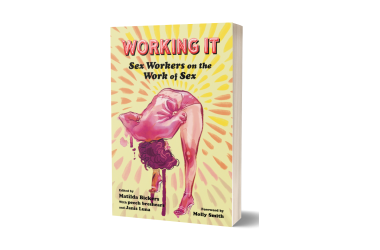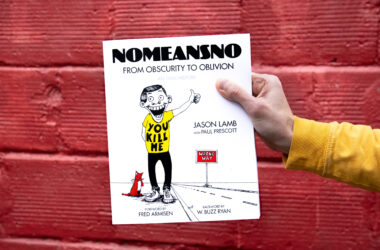by Robert Graham
Robert Graham’s Anarchism Weblog
November 23rd, 2016
Gabriel Kuhn is the author and editor of numerous works relating to anarchism, rebellion and revolution, including Soccer vs. the State: Tackling Football and Radical Politics, Life Under the Jolly Roger: Reflections on Golden Age Piracy, a collection from Gustav Landauer, Revolution and Other Writings: A Political Reader, Erich Mühsam‘s Liberating Society from the State and Other Writings: A Political Reader, and All Power to the Councils! A Documentary History of the German Revolution of 1918–1919. He has a blog at PM Press, his main publisher. The following excerpts are from his post, “Revolution Is More Than a Word: 23 Theses on Anarchism.” I thought it was a useful contribution to the current situation facing anarchists, particularly in the U.S. I included some of Gustav Landauer’s writings in Volume One of Anarchism: A Documentary History of Libertarian Ideas. I discuss the origins of the anarchist movement from out of the struggles and debates within the International Workingmen’s Association (the so-called “First International”) in ‘We Do Not Fear Anarchy – We Invoke It’: The First International and the Origins of the Anarchist Movement.
Anarchism: A Political Movement
The origin of anarchism as a self-defined political movement dates back to the social question in mid-nineteenth-century Europe. Anarchists were part of the International Workingmen’s Association, better known as the First International, together with the political forces that would later turn into social democrats on the one hand and Leninists on the other. (1) We consider this origin important and see anarchism as part of the left-wing tradition. We are opposed to declaring anarchism a “philosophy”, an “ethic”, a “principle”, or a “way of life” rather than a political movement. An existential attitude is one thing; organizing for political change is another. Without proper organizing, anarchism is easily reduced to a noble idea, reflecting religion or hipsterism more than political ambition. At the same time, anarchism is not just antiauthoritarian class struggle. It is broader and includes activities that range from setting up social centers to deconstructing gender norms to conceiving alternative forms of transportation. Anarchism’s prefigurative dimension has always included questions that didn’t fit narrow definitions of the Left: dietary, sexual, and spiritual concerns as well as matters of personal ethics…
Anarchism’s problems today
The problem of revolution has haunted anarchism since its inception. Other problems have come and gone, depending on historical circumstances and the state of the movement. Here are the main ones we’re able to identify today:
* There is an unfortunate sense of moral superiority, which often overshadows political work. The underlying problem seems to be that two motivations overlap when people become active in anarchist circles: one is that you want to change the world; the other is that you want to be better than the average person. The latter easily leads to self-marginalization since any sense of moral superiority relies on belonging to a selected few rather than the masses. When this becomes dominant, your identity takes precedent over your actions and pointing out the personal shortcomings of others over political change. Ironically, the main targets are often people from within our own ranks rather than the enemy, following the sorry logic of, “If you can’t hit the ones you need to hit, you hit those within arm’s reach.” The combination of judging outsiders while competing with insiders for the moral top-dog position is incompatible with any movement claiming revolutionary integrity.
* The anarchist movement is, by and large, a subculture. Subcultures are great. They provide a home to people (sometimes a life-saving one), they help preserve activist knowledge, they allow for experimentation, and so on. But dissent is not revolution. So if the politics are reduced to the subculture, the revolutionary rhetoric becomes empty and alienating. People hate this and fuck that, but to what end?
* The default mode (mood) of many anarchist circles ranges from grumpy to outright rude. At times, our supposed microcosms of a liberated world are among the most uninviting places imaginable: dark, dirty, and populated by folks who confuse unfriendliness with rebellion. Acting like a jerk does not make you more radical, it just makes you a jerk. Sadly, belligerence also characterizes internal debates. The threads on some anarchist online forums are among the safest means to turn people off anarchism for good. A radical approach to conflict is characterized by openness and self-criticism, not anonymous growling.
* Despite the theoretical embrace of individuality and diversity, many anarchist scenes are incredibly uniform. Any average coffee shop on main street brings together a wider variety of people than most anarchist venues. There are historical reasons for this, but essentially, anarchist culture – the language, the appearance, the social codes – is simply very homogenous. How anarchist are environments in which people feel uncomfortable because of what they wear, eat, or listen to?
* There is a crucial divide in anarchist circles between activists who are opposed to injustice and activists who experience injustice. All activists need to work together to effectively change anything, but the different motivations need to be considered. While people who follow a missionary call tend to be rather ideological, people affected by injustice are often more pragmatic. If such a difference is not recognized, people will drift apart. In the worst case, only the ideologues remain, with abstract debates about personal identity or acceptable language assuming the supposed forefront of radical politics while losing any connection with political work on the ground. Radical politics, then, becomes primarily an intellectual exercise that says next to nothing about the quality of its protagonists as dedicated and reliable comrades.
* The concepts of a free space and a safe space, respectively, are often confounded. Safe spaces, that is, spaces where people can count on finding care and support, are needed in the world we live in. But they are spaces that fulfill a certain purpose. They are not the free spaces we seek to establish, that is, spaces in which people speak their mind, engage in debate, and commonly solve the problems that arise in the process. What makes people safe in the long run is the collective ability to negotiate boundaries. Absolute safety is impossible. Vulnerabilities, misunderstandings, and irritations are part of social life and will not disappear even in the most anarchist of societies.
* The idea that everyone should be allowed to do everything is confused with the idea that everyone is able do everything. The introduction of skills or the passing on of knowledge by experienced activists and organizers is scoffed at. This leads to encountering the same pitfalls and reinventing the wheel over and over again.
* There exists an almost complete lack of vision and strategic orientation in the anarchist movement. In addition, organizational structures are in crisis. Spontaneity, the affinity group model, and a romanticized understanding of multiplicity have become hegemonic. All of these notions are riddled with flaws. The only longterm communities they allow consist of a handful of friends, which is an insufficient basis for the organizing required for broad social change. The main answer to this from within the anarchist movement, namely platformism, underestimates the importance of individual responsibility, which leads to a confusion of formality with efficiency…









